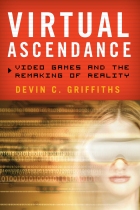 RealD 3D is so last year. Now, if you’re old enough to remember the Dark Ages of 3D cinema, when you had to wear those funny red and green “glasses” and exert an effort of will to lose yourself in a movie, then you may scoff at this. Until yesterday, I myself would have called you crazy for suggesting such a thing. After all, just two years ago, I sat in a darkened theater dumbstruck as the landscapes of Pandora leaped off the screen. Whatever your opinion of the film, there’s no denying Cameron’s technical achievement in bringing Avatar vividly and viscerally to life. Visually, it was captivating.
RealD 3D is so last year. Now, if you’re old enough to remember the Dark Ages of 3D cinema, when you had to wear those funny red and green “glasses” and exert an effort of will to lose yourself in a movie, then you may scoff at this. Until yesterday, I myself would have called you crazy for suggesting such a thing. After all, just two years ago, I sat in a darkened theater dumbstruck as the landscapes of Pandora leaped off the screen. Whatever your opinion of the film, there’s no denying Cameron’s technical achievement in bringing Avatar vividly and viscerally to life. Visually, it was captivating.
Since then, I’ve been stunned by the gorgeous, lush, and flawless 3D images presented by perhaps dozens of movies—and I stand by my initial statement. In fact, I’ll do you one better: What we’ll see from films within the next five to 10 years will make today’s 3D look like Hollywood’s primitive, color-shifted attempts of the early 20th-century. The future of film is Holodeck-real. And it’s just around the corner.
In an effort to promote its Playstation Store, Sony just released three short films that will change the cinema experience forever. Under contract with Sony, the UK-based Studio Output and Marshmallow Laser Feast attempted the impossible: projection-mapping an entire room in real-time, over a single take—no post-production, digital editing or addition of cool CGI effects after the fact.
For those of you unfamiliar with projection mapping, it’s essentially a technique that displays animated, 3D images on a fixed surface (usually a wall or building). It’s a recent technology, but it’s being used more and more frequently in advertising and marketing circles. You can see some examples of standard projection mapping here.
 Though projection mapping is relatively new, the real innovation behind the Sony videos is how they were done. Traditional projection mapping’s downfall is a matter of perspective: the effect is visible only from a single, fixed point. Creating a 3D, immersive movie with the audience at the center that also changes angles and viewpoints was, therefore, impossible. Sony’s production team cleared this hurdle by combining existing technology from two distinct realms of entertainment: movies and videogames. The team connected a standard Steadicam camera mount to several Playstation Move motion controllers, and synced them up with EyeToy motion-capture cameras (used for Sony’s PS3 console). The results are… well, see for yourself. And as you’re watching, bear in mind that these are, according to everyone on the production team, entirely real-time and completely free from post-production editing or enhancement (scroll down to the end to see the videos).
Though projection mapping is relatively new, the real innovation behind the Sony videos is how they were done. Traditional projection mapping’s downfall is a matter of perspective: the effect is visible only from a single, fixed point. Creating a 3D, immersive movie with the audience at the center that also changes angles and viewpoints was, therefore, impossible. Sony’s production team cleared this hurdle by combining existing technology from two distinct realms of entertainment: movies and videogames. The team connected a standard Steadicam camera mount to several Playstation Move motion controllers, and synced them up with EyeToy motion-capture cameras (used for Sony’s PS3 console). The results are… well, see for yourself. And as you’re watching, bear in mind that these are, according to everyone on the production team, entirely real-time and completely free from post-production editing or enhancement (scroll down to the end to see the videos).
We’re still a few years away from the practical, large-scale application of this, but it’s now demonstrably possible. Sony’s opened the window on a new movie experience, and it’s only a matter of time before others follow.
Personally, I’m holding out for the battle of Hoth.
You can read a bit more about the videos here.
